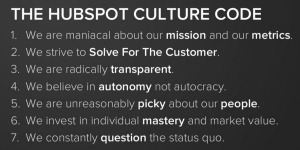
Our last post illustrated the changing landscape of corporate training and offered some important steps your organization can take to ensure you’re keeping up with your competitors cultivating top talent. However, those numbers primarily focused on the challenges companies face when it comes to engaging employees in corporate learning, and that’s only part of the story.
Here are seven statistics that paint a more complete picture of how corporate training budgets break down, what training formats are most popular and how much organizations are willing to outsource.
1. Service-Related Organizations Spend the Most on Training
Organizations that prioritize service, such as retail, spent the most on training in recent years: $ 871 per learner in 2014, according to the 2015 Training Industry Report. That was followed by manufacturers ($ 653).
The takeaway: Industries with many service touch points carry more potential for human error to hurt the customer experience and future sales, so investing in training can have a significant payoff. The same is true of high-risk industries such as manufacturing.
2. When It Comes to Training, Company Size Matters
Larger companies generally spend less on training per employee. Much of this can be attributed to economies of scale; it’s less expensive to add more employees to training once you’ve made the initial investments in a learning management system and material. Small companies with fewer than 1,000 employees spent $ 1,105 per employee on training, according to the 2015 Training Industry Report, while midsize companies (less than 10,000) spent $ 544 per employee and large companies of 10,000 or more spent $ 447.
The takeaway: Use this data to see how your company’s training expenditures compare to peers of similar size.
3. More Companies Anticipate Investing In Online Learning
Learning management systems are the most anticipated investment for the majority of Training Industry Report survey respondents, with 38 percent reporting they expected to purchase them in 2015. That was closely followed by other online learning tools and systems, such as e-learning programs or training software, with 37 percent of respondents planning to invest in them.
The takeaway: Online learning opportunities are reshaping the way we train. If your company isn’t on board, it will be difficult to stay competitive in this global workforce.
4. Training Content Remains a Priority
Aside from learning management systems and online learning tools, 36 percent of companies reported they planned to invest in training content as their next highest priority.
The takeaway: Developing training content that is relevant and engaging can be difficult to do in-house. Look for a company that offers training and development content that focuses on the challenges of working virtually and can be customized to meet your organization’s specific needs.
5. Organizations Are More Willing to Outsource Training Instruction
On average, organizations outsource slightly more than half of their training and development instruction (about 53 percent) in 2015, according to the Training Industry Report. The majority of outsourcing was related to the development of customized training content and was most common among large organizations; 60 percent of those organizations said they outsourced some or all of their training instruction.
The takeaway: Outsourcing training and development has become increasingly common. Rather than viewing it as competition for their jobs, training and development professionals should see it as a way to bring in additional expertise and free up some of their time for more strategic endeavors, such as succession planning and performance management.
6. 42% of Companies Increased Their Training and Development Budgets
When it comes to budgeting for training and development, the results are mostly positive: 42 percent of companies said they had increased their budget from the previous year, according to the 2015 Training Industry Report, while 43 percent said it remained the same. Only 15 percent said their training budget had decreased.
The takeaway: When it comes to investing in their people, the majority of your peers are either maintaining the status quo or raising the bar. Shouldn’t your company do the same?
7. Companies Are Increasingly Using Blended Learning Techniques
While traditional classroom-based learning still appears to be the method of choice, nearly 32 percent of training hours were delivered with blended learning techniques (such as webinars and online self-assessments) in 2015, according to the 2015 Training Industry Report.
Business & Finance Articles on Business 2 Community(61)
Report Post






